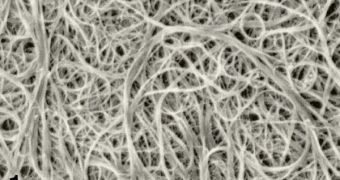As carbon-nanotube technology progresses, it becomes clearer each day that these materials will most likely constitute the foundation of tomorrow's society. They will be used in just about everything, from sports equipment to computer processors and next-generation electronic devices, but experts are still concerned about what effects they may have on the human body. Some studies proposed that the brain could defend itself against this type of intruders, but a new research suggests that the lungs may not be able to do this. The investigation revealed that CNT could adversely affect the outer lining of the lungs.
The team behind the study, composed of scientists from the North Carolina State University (NC State), the Hamner Institutes for Health Sciences, and the National Institute of Environmental Health Sciences, admits, however, that more studies are required to confirm its finds. It adds that the long-term effects of exposure are still a mystery. Unsuspecting mice were used for the new experiments, which sought to test whether the new materials could be used without harm to humans.
In the study, mouse models were subjected to a single dose of carbon nanotubes, and then their evolution was followed. The scientists discovered that an immune-system response began to form within one day from the inhalation stage, with clusters of lymphocytes and monocytes, two types of immune-system cells, forming on the surface of the pleura, the outer lining of the lungs. They also discovered that some regions of the pleura had been scarred, a phenomenon known as fibrosis. This is common in people working in mines or with asbestos, when fine particles deposit themselves in the lungs, and reduce the organs' ability to process oxygen and carbon dioxide.
Within thee months of exposure, all signs of the scarring and immune response in the mice disappeared, the team reports. It adds, however, that mice were subjected to only one exposure to the CNT, whereas, in real life, many more “doses” would be inhaled by a single person. “It remains unclear whether the pleura could recover from chronic, or repeated, exposures. More work needs to be done in that area and it is completely unknown at this point whether inhaled carbon nanotubes will prove to be carcinogenic in the lungs or in the pleural lining,” the senior author of the new study, NC State Associate Professor of Environmental and Molecular Toxicology Dr. James Bonner, explains.

 14 DAY TRIAL //
14 DAY TRIAL //